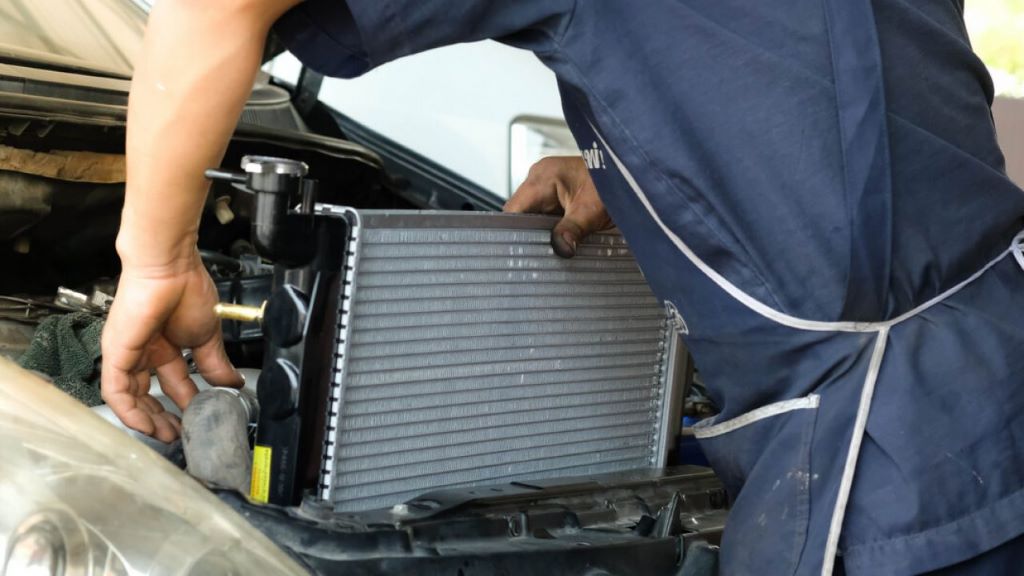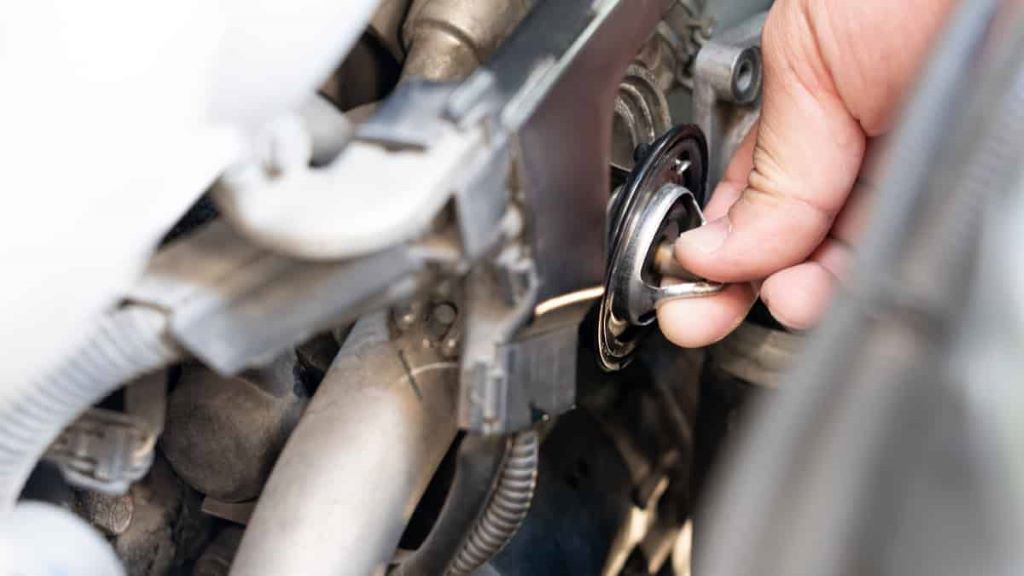As we all know, a car is the combination of various components. In order for it to work normally and safely, all auto parts must be perfectly fit, and the same goes with radiator and engine.
The radiator maintains the engine temperature with the aid of the coolant fluid. Without the radiator, the engine is nothing but a fireball. If the radiator is broken or does not work properly, the engine will overheat, leading to various issues.
If it starts showing problems, you will need to install a new one. So how long does it take to replace a radiator?
Depending on your skills with automobile mechanisms and previous experiences, radiator installation time will vary.
However, before knowing about the replacement, it will be useful to know about the reasons that are responsible for damaging a radiator.
But before getting to know how to replace a radiator, it is common sense to understand the issues around this car component.
Contents
- The Reasons For The Damage Of A Radiator
- How Long Does It Take To Replace A Radiator?
- Frequently Asked Questions
- Is it hard to replace a radiator?
- How long does it take to replace a radiator hose?
- How much does it typically cost to replace a radiator?
- How do you know if your radiator needs to be replaced?
- Can you drive a car with a bad radiator?
- How often do car radiators need to be replaced?
- Should radiator hoses be hot?
- Are silicone radiator hoses better?
The Reasons For The Damage Of A Radiator
Several reasons can reduce the efficiency of a radiator and even damage some of its parts. These following things are likely to do the most damage to this important component:
A collision. The radiator is a vulnerable component that can be broken or damaged easily. You may need to repair or even replace it if the car has been on a sideways or head-to-head collision.

SEE MORE:
Frequent overheating
Overheating is not normal and can lead to serious damage to several components. The radiator is one of them.
Although its main function is to keep the engine heat under control, the system itself is more susceptible to heat-related damage.
If the car becomes overheated frequently, you should not neglect this issue. The radiator may become damaged before time.
Damaged pressure cap
The function of this cap is to control the radiator’s pressure. In the case of excessive pressure buildup, the cap decreases it by releasing the antifreeze to overflow the compartment.
The regular operation of the radiator depends on the correct pressure management. If the pressure cap is faulty, it cannot control the extra pressure, and the radiator damages itself by overworking.
A broken thermostat
A thermostat helps the pressure cap to control the flow of the coolant. So, the radiator takes a blow if it does not work properly.
How Long Does It Take To Replace A Radiator?
So how long does it take to fix a radiator? Replacing a radiator is a laborious process, and the time duration varies depending on the skills of the service person.
So the clear answer for the question “how long does it take to replace a radiator” is: A professional mechanic is unlikely to take more than 2 to 3 hours.
Radiator replacement time could take another 30 minutes to one hour because the process involves some extra services like removing coolant, broken belts, and a few other things, if necessary.

You may need more time depending on the conditions of some other parts. If the car is old, there is a possibility that electrical connectors and terminals are damaged and the fasteners are broken.
You will need to repair and replace these parts for the radiator to resume its operation. Some mechanics may also want to change the antifreeze and replace the radiator hoses.
How long does it take to replace a radiator if the service person is an amateur? In that case, radiator replacement time may take 7 to 8 hours or more.
First-timers may have trouble with small parts of the task like locating bolts and other elements. Doing the replacement and installation a couple of times will cut the duration significantly.
Frequently Asked Questions
In order to understand the radiator even further, apart from answering the question “how long does it take to fix a radiator”, we gather all the most important questions around this car part:
Is it hard to replace a radiator?
Answering the question: “is it hard to replace a radiator in a car?”, it is quite hard for common car owners to replace this component. However, it is do-able with enough patience and care.
Drivers need to drain the old radiator first, then detach and remove all the connecting parts.
Therefore, you can remove the radiator and install a new one, along with coolant. Nevertheless, it might take a whole day, so it is better to drive your car to the mechanic.

How long does it take to replace a radiator hose?
It takes around 15-20 minutes for car owners to have radiator hoses replaced.
How much does it typically cost to replace a radiator?
Around $300 and $1200 for both the car parts and labor involved in the installation. Even though the average cost of a radiator is around $700, it depends on the complexity of the installation, as well as the car model in order to determine the total cost.
How do you know if your radiator needs to be replaced?
As car owners, it is crucial to know if there is any problem with their radiators. In order to understand when to change your radiator, these are the symptoms that you need to recognize.
Leaking
One of the most significant signs proving that your car is having a bad radiator is that there is a leak.
This problem happens due to cracks. In order to recognize this problem, drivers can check to see if there is any green liquid under the automobile.
The source of this leak can be from a radiator hose. This is the most common issue that could happen to the radiator, and it can be easily identified.
A Bad Thermostat
Another symptom that proves you are having a faulty radiator is a thermostat goes bad. Even though it is not counted as a radiator’s part, it plays a huge role in helping the radiator function.
However, when this component fails, the vehicle as well as the radiator will start to overheat.

Air in Cooling System
When this happens, the air will block the coolant, making it unable to flow. Air trapping in the cooling system happens quite often and creates an overheating engine.
Rust
There will be significant damage to the cooling system, as well as the radiator if there is any rust inside.
The thick liquid created by a rust piece can mix inside the coolant, lead to corrosion and stop it from cooling the whole automobile system.
Obstruction in the System
Along with rust, obstruction in the cooling system will get inside the passages and prevent it from working normally. The blocking will cause radiator issues due to the lack of coolant flow, creating overheat.
The Water Pump Fails
Last but not least, faulty radiator symptoms can be spotted by a faulty water pump.
Usually, the water pump will use water to control the car’s temperature by pumping water traveling through the radiator, the pump and the engine, then back to the radiator again.
However, If there is a damaged water pump, the cooling system cannot pump the coolant to the whole engine, therefore cannot maintain the right temperature for the whole automobile. This definitely leads to overheating.
Can you drive a car with a bad radiator?
To be fair, you can. However, a bad radiator cannot cool the whole system and raise engine heat, which damages other car components. So it is suggested to not drive with a faulty radiator.
Check out this video from 1A Auto to learn more about some common problems that will eventually happen to any radiator!
How often do car radiators need to be replaced?
It takes around 5-8 years. An old metal radiator with well maintained can last quite long, while modern radiators, which are made from plastic, will contract and expand when the temperature of the radiator changes.
Should radiator hoses be hot?
Usually, the bottom of the radiator hose is cold. Even on hot days, the hoses may be warm. This is the sign showing that the radiator is working normally: The hose is successfully cooling the hot coolant.
Are silicone radiator hoses better?
Silicone is definitely the great material to make the radiator hoses due to its superior flexibility compared to rubber. Unlike rubber, silicone is highly flexible so car owners do not worry about their houses splitting, hardening.



